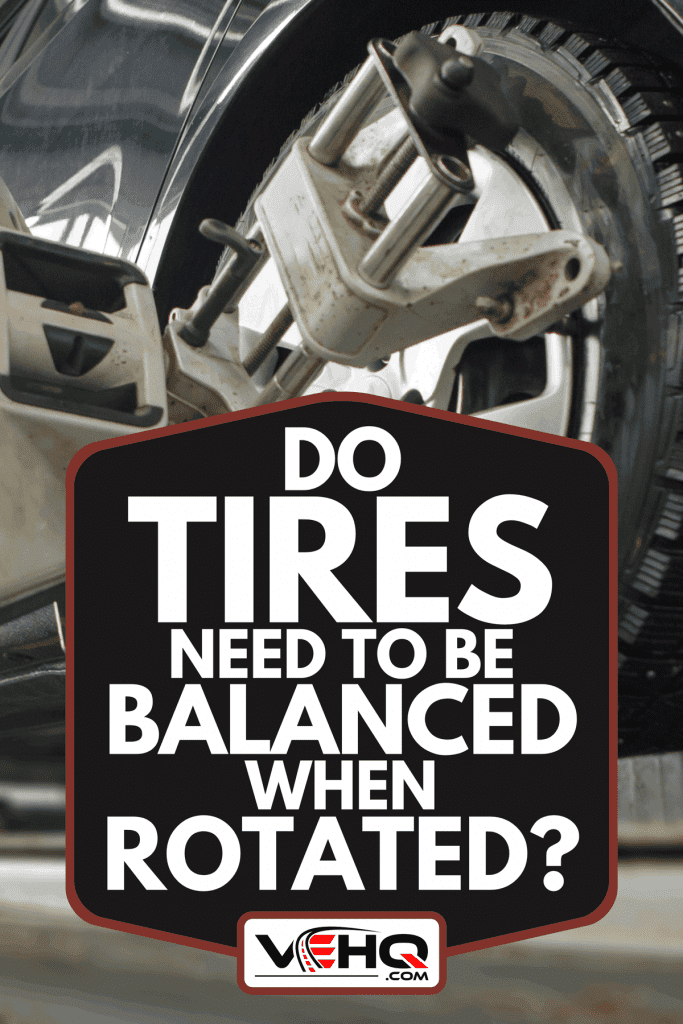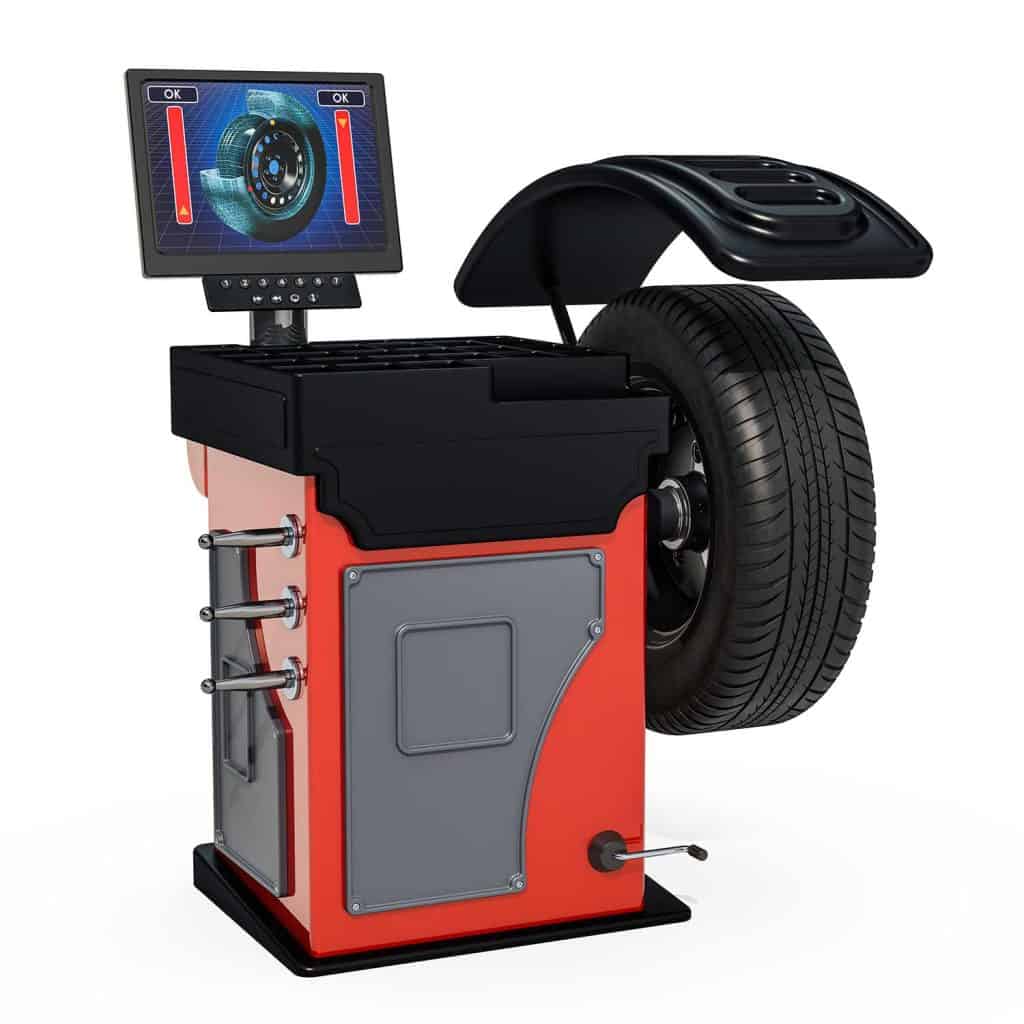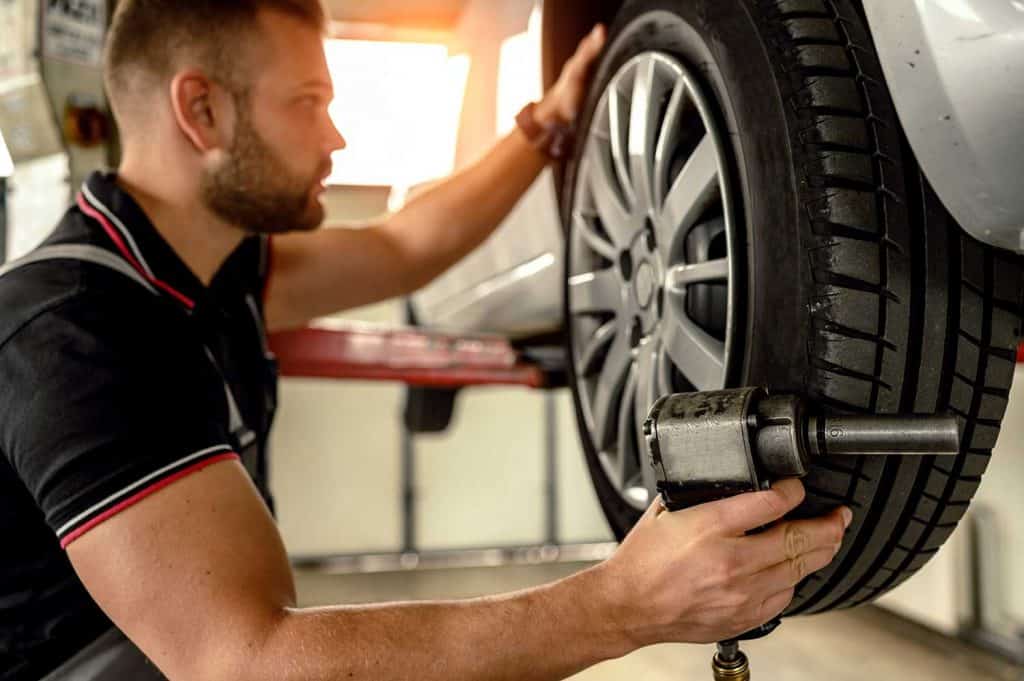Have you been told that you need to balance your tires each time they are rotated? Maybe you're getting ready for routine maintenance, and you are unsure whether or not your tires need to be balanced. To keep you from paying for services that are not needed, we decided to do some research on the topic. We've outlined our findings below.
It is not always necessary to balance tires every time they are rotated. However, it is a beneficial practice. Manufacturers recommend both rotating and balancing tires approximately every 7,500 miles to help avoid uneven wear.
You now know that it's not necessary to balance tires each time you have them rotated, but do you know what tire balancing is and why we do it? Keep reading to find out why it is important to balance and rotate your tires, if it's possible to rotate them too much, and how much the procedure typically costs.

Do Tires Need to be Balanced When Rotated?
Having your tires balanced is beneficial to the life of your tires and contributes to a smooth driving experience. Although it is not necessary to have them balanced each time you have them rotated, it's a smart thing to do. Imbalanced tires will cause your vehicle to vibrate or shake when you are driving as well as causing damage to your suspension, excessive wear on your tires and more.
According to Firestone, you should rotate and balance your tires every 7,500 miles or every six months, whichever comes first. If you are using synthetic oil, this means that it is best practice to have your tires rotated and balanced with each oil change. However, if you are using conventional oil, you'll only need to do so approximately every other oil change.

What is Tire Balancing?
Tires come with small metal pieces attached to the rim. Generally, there will be three of these weights on each tire. Since tires have different mass distributions, these pieces help balance the mass amongst the wheels.
To accomplish this, mechanics place the tire on a balancing machine. This machine spins the tire to discover its steadiness. The mechanic will reposition the weights until the tire demonstrates steadiness.
Curious about these machines? You can view a combo tire balancing and changing machine on Amazon.
How do I Know if My Tires Need to be Balanced?

Imbalanced tires typically cause your vehicle to vibrate in the steering wheel, floorboards, and seats when you drive above 50 MPH. This vibration is a good sign that your wheels need to be balanced. Sometimes, you can tell which tires are off-balance by noting where the vibration occurs.
For example, if your steering wheel is shaking, your front tires are likely the culprit. If your seat is shaking, on the other hand, your back tires are probably imbalanced.
However, sometimes you may not notice any vibration from an imbalance in the back tires. For this reason, when rotating your tires, it can be a good idea to balance at least the back tires even if the front tires are fine.
What Causes Tires to Become Unbalanced?
Imbalanced tires are a common occurrence. Sometimes, it can happen when one or more wheel weights fall off due to a slight impact, such as hitting a pothole or curb. Other times, wheels become imbalanced because of excessive wear. That's why it's important to keep your tires rotated.
If you don't regularly rotate your tires, the tread on the front wheels will wear out much quicker than the tread on the back wheels. Imbalance, however, is not always due to overuse.
Vehicles that do not get driven very often are more prone to developing flat spots on the tires. These spots will cause shifts in balance.
How Often Should You Rotate and Balance Tires?
According to Firestone, most vehicle manufacturers recommend rotating and balancing your tires every 7,500 miles or every six months, whichever comes first. This is not always the case, however.
Your driving habits and the places you drive your vehicle can also affect how often you should rotate and balance your tires. If you notice some getting more worn than others, go ahead and swap them around.
Can You Rotate Tires Too Often?
You really cannot rotate your tires too often. The problem occurs when you don't rotate them often enough. You can have them rotated every other time you get an oil change, or you can opt to get it done at every oil change. Don't worry. Rotating them will not hurt your tires or vehicle.
What is the Correct Tire Rotation?
According to Mobil, correct tire rotation procedures differ from vehicle to vehicle. Use the following guidelines to help you find the correct pattern in which to rotate your tires.
Four Tires of the Same Size
Not all vehicles require the same size tires on the front and back. However, if all your tires are the same size, you should rotate them in this manner:
FWD
For front-wheel drive vehicles, you'll take the wheels from the front of the car and move them directly to the back. For example, the driver-side front tire will go to the driver's side back, and the passenger-side front tire will replace the passenger-side back.
The back wheels, on the other hand, should be crisscrossed. The passenger side back tire will go to the driver side front, and the driver side back tire will replace the passenger side front.
AWD, 4x4, & RWD
For all-wheel drive, four-wheel drive (4x4), and rear-wheel drive vehicles, you will use an "X" pattern when rotating the tires. The front passenger side tire will go to the back driver side. The front driver side tire will go to the back passenger side.
The back tires will be the same. Move the driver-side back tire to the passenger-side front, and the passenger-side rear tire to the driver-side front.
Alternate RWD, 4x4, & AWD
Although it seems like this tire pattern should be the same as the above pattern, it is not. Instead, the driver-side front tire goes to the passenger side back, and the passenger side front goes to the driver side back. The driver-side rear tire replaces the driver-side front, and the passenger-side rear tire goes to the passenger-side front.
Different Size Directional Tires
When dealing with different size directional tires, you must dismount each tire and remount them on the appropriate rims according to their direction. Then, they will also need to be rebalanced.
Same Size Directional Tires
For directional tires of the same size, the process isn't complicated. You simply need to move the front wheels directly to the back and vice versa. For example, the driver-side front tire moves to the driver-side back, and the driver-side back tire replaces the front. The passenger-side front tire replaces the passenger-side back, and you'll move the passenger-side back tire to the front.
Different Size Non-Directional Tires
For vehicles with different size tires that are non-directional, you'll use a side-to-side pattern for rotation. The driver-side front tire will replace the passenger-side front tire. The passenger-side front will then go to the driver-side front.
The same goes for the back tires. Take the driver-side back and move it to the passenger-side back. Then, move the passenger-side back tire to the driver-side rear.
How Much Does it Cost to Get Tires Rotated and Balanced?
Walmart
Walmart offers lifetime tire balancing and rotation for only $14 per tire. With the lifetime package, you can have your tires rotated and balanced every 7,500 miles at no additional charge. Without the lifetime package, Walmart will rotate your tires for only $2.50 per tire.
You can see a complete list of Walmart's maintenance prices here.
Firestone Complete Auto Care
If you purchased your tires from Firestone Complete Auto Care, you'll get free lifetime tire rotations. If you didn't purchase tires from Firestone, they charge $56.40 for tire rotation and balancing, which equates to $14.10 per tire.
Pep Boys
According to their website, Pep Boys offers free tire rotations. However, this is only when you have other maintenance done on your vehicle.
They do not specify a price if all you need is a rotation. Although it does not appear that they offer a one-time rate for balancing, you can get a lifetime tire balancing package for as low as $15.99 per tire.
Discount Tire
If you purchased tires from Discount Tire, they will rotate and balance them for free. If you did not purchase your tires from them, they would still do the rotation for free. However, they charge $14 per wheel for balancing.
Summary
Tire balancing and rotation are important for the health of both your vehicle and your tires. While it is not necessary to balance your tires each time you have them rotated, it is a good practice. As a general guideline, tires should be balanced and rotated every 7,500 miles.
For more helpful tips on tire maintenance, read these other posts on our blog:

